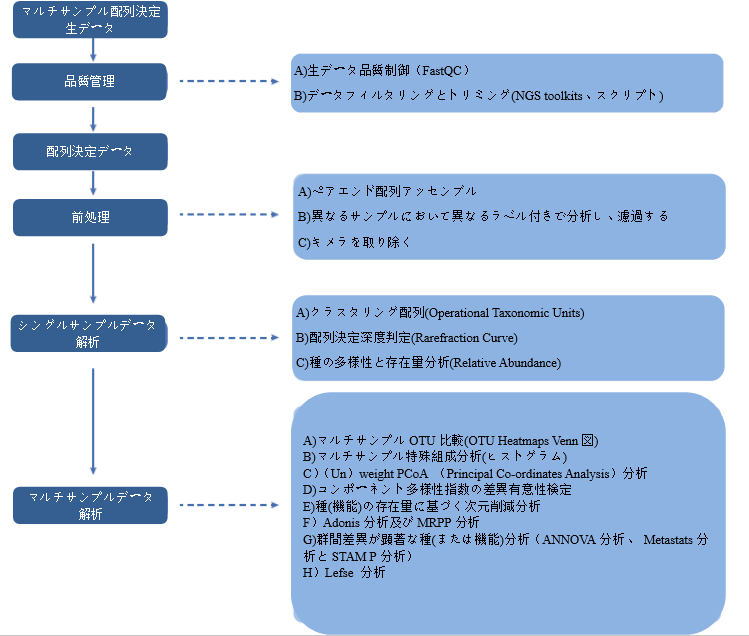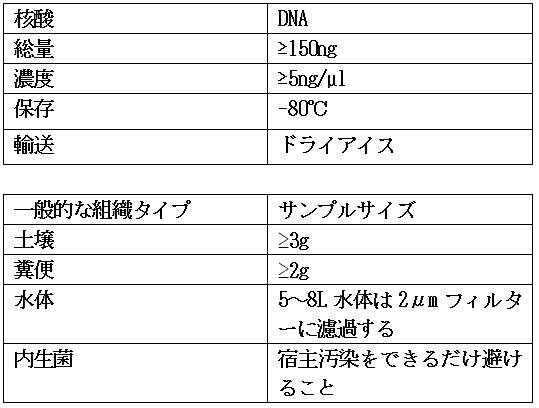Catalog Number|Packaging
Mat. No |
Ref. No |
No. of preps |
-
Description
16S/18S/ITS Amplicon Metagenomic Sequencing detects gene fragments in specific regions to obtain information about microbial diversity and community composition differences of bacteria/eukaryotic microbes/fungi other species in the sample. It can be divided into DNA extraction, PCR amplification, library construction, sequencing, data analysis and other steps.
-
Technical Workflow
Scheme design → Sample processing → Library construction sequencing → Data analysis → After-sales service
-
Analysis Workflow
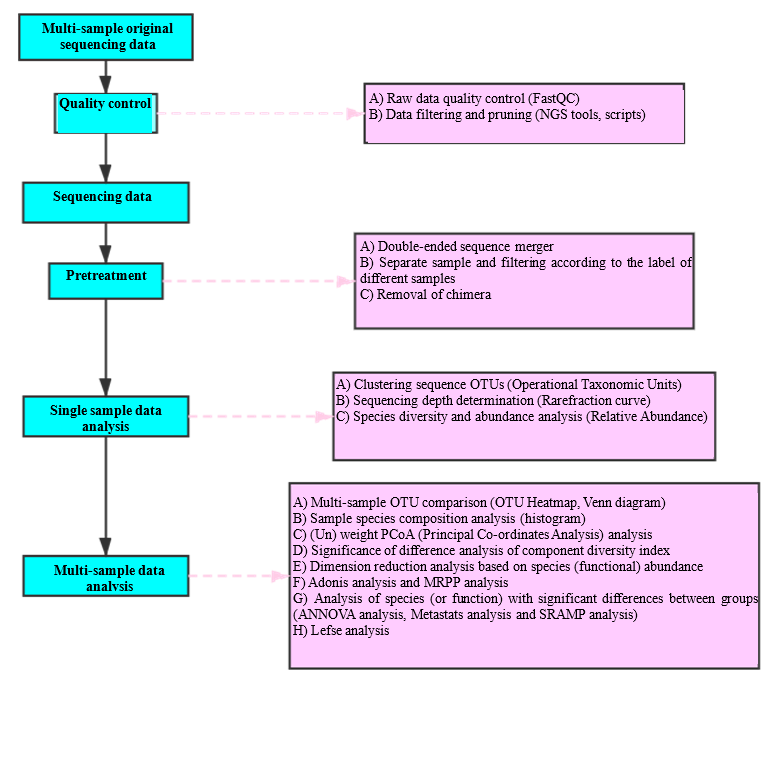
-
Features
1. Various sequencing region selection and flexible formulation of study scheme;
2. Senior technical teams, with more than ten years of information analysis experience, can provide a variety of personalized analysis;
3. Rich sample in sample processing, including soil, water body, feces, silt, fermentable substance and other sample types;
4. Multiple advanced analysis solutions can be provided for different biological problems;
-
Parameter

-
Applications
Industrial field, human microbiology, environmental microbiology, agricultural field
-
Requirements of Samples
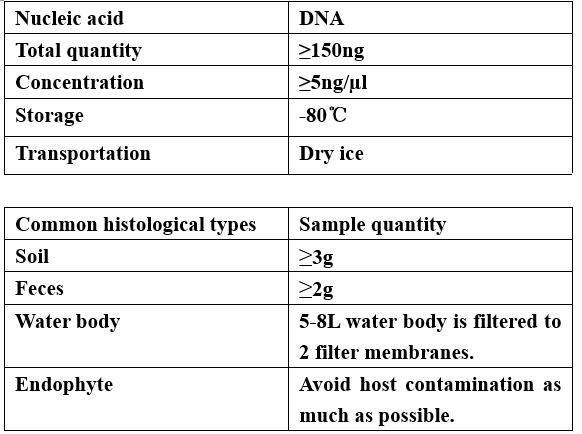
-
Results Demo
Sequencing depth analysis of single sample
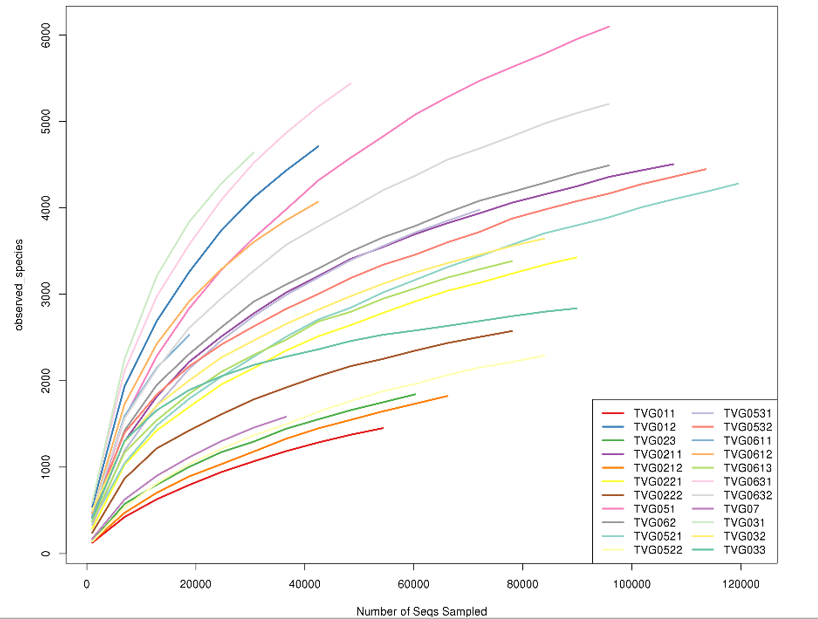
It is used to assess whether the sequencing data volume of each sample is sufficient to cover all groups in the community and indirectly reflects the species richness in the sample. When the observed_species curve tends to be gentle, it can be assumed that the sequencing depth covers almost all species in the sample. On the contrary, it indicates that the species diversity in the sample is higher, and there are more undetected species, so more reads need to be measured to meet the analysis requirements.
Community structure analysis of multi-sample species

The software RDP classifier was used to annotate species with GreenGenes database, and the species composition of each sample at different classification levels was counted to draw a community map of multi-sample species composition. Unknown indicates that the abundance of this classification level cannot be determined. Only some species with higher abundance are shown in the figure, and the species with abundance lower than 1% are shown as Others.
Association network analysis of microbial species
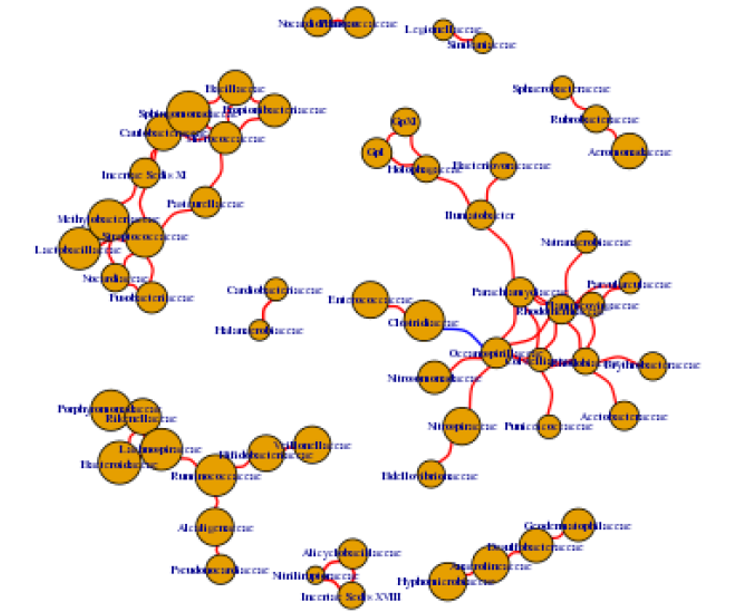
The fundamental objective of association network analysis of microbial species is to investigate the interaction between membersof different communities, and to look for the interactive model of Co-occurrence or Co-exclusion of microbial species in different habitats through association analysis, so as to infer the possible "cooperation" or "competition" relationship between different microbial members.
-
Sort by
-
Date
Date(
)
Date
Date(
)
Impact Factor
IF(
)
Impact Factor
IF(
)



 Inquire
Inquire